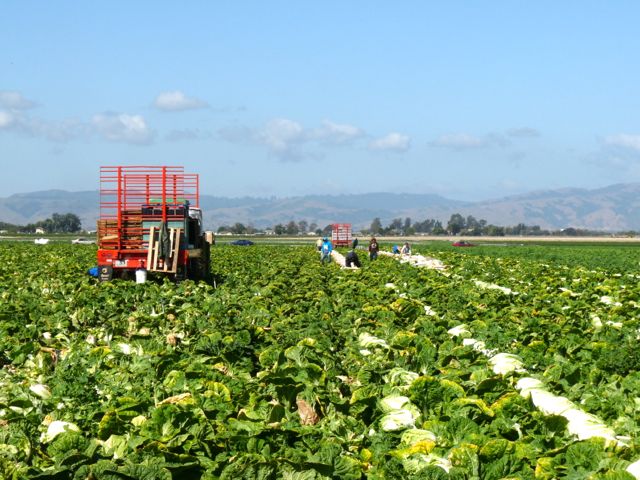Herbicide Limits Plantings Following Cilantro
Caparol Label Change Sought To Reduce Plant-Back Restrictions Following Cilantro
By Patrick Cavanaugh, Editor
Cilantro production is important in California and more growers are planting it. However, an herbicide used in cilantro has plant-back restrictions to other crops.
It’s easy to grow and works well as a rotation crop, explained Oleg Daugovish, a UCANR Cooperative Extension Strawberry and Vegetable Crop Advisor serving Ventura County.
“It’s an easy fit in our production systems. You can fit it between many crops,” Daugovish said. “It’s a quick crop and can be planted in a small planting window.”
To help minimize weeds, Caparol herbicide is labeled for use on cilantro. “It works very well and it’s all we need to control weeds in cilantro,” Daugovish explained.
“But the problem is that we have some plant-back restrictions. Some of the crops, we obviously have to rotate your cilantro with something,” Daugovish said. “You have to have a label that allows you to go back to the field with other crops such as peppers, lettuce, Brussel sprouts or spinach.”
That’s the biggest problem for growers, as they like how it works on cilantro, but need an allowance to go back in with different crops without worry.
Under the IR-4 program, Daugovish conducted research to see if other crops could safely be planted after a cilantro crop. The research indicated that crops following cilantro within the plant-back restrictions were safe for the most part.
“They treatments were similar to the untreated,” said Daugovish. “We are putting some numbers together and running statistics in different locations such as Salinas, Santa Paula, and Ventura.”
Daugovish said it appears that it is safe to follow cilantro without waiting for plant-back restrictions, and he plans to submit the data to the IR-4 program who can get it to the registrant who can amend the label.
“We need to make the change on the label so growers can use it without the plant-back restrictions,” said Daugovish. “We expect to have the data sets to support a label change so that growers can use it.”
“As far as herbicides, we may not have another option for a while, but if growers can use is safely with peace of mind it will be a major benefit,” he said.











